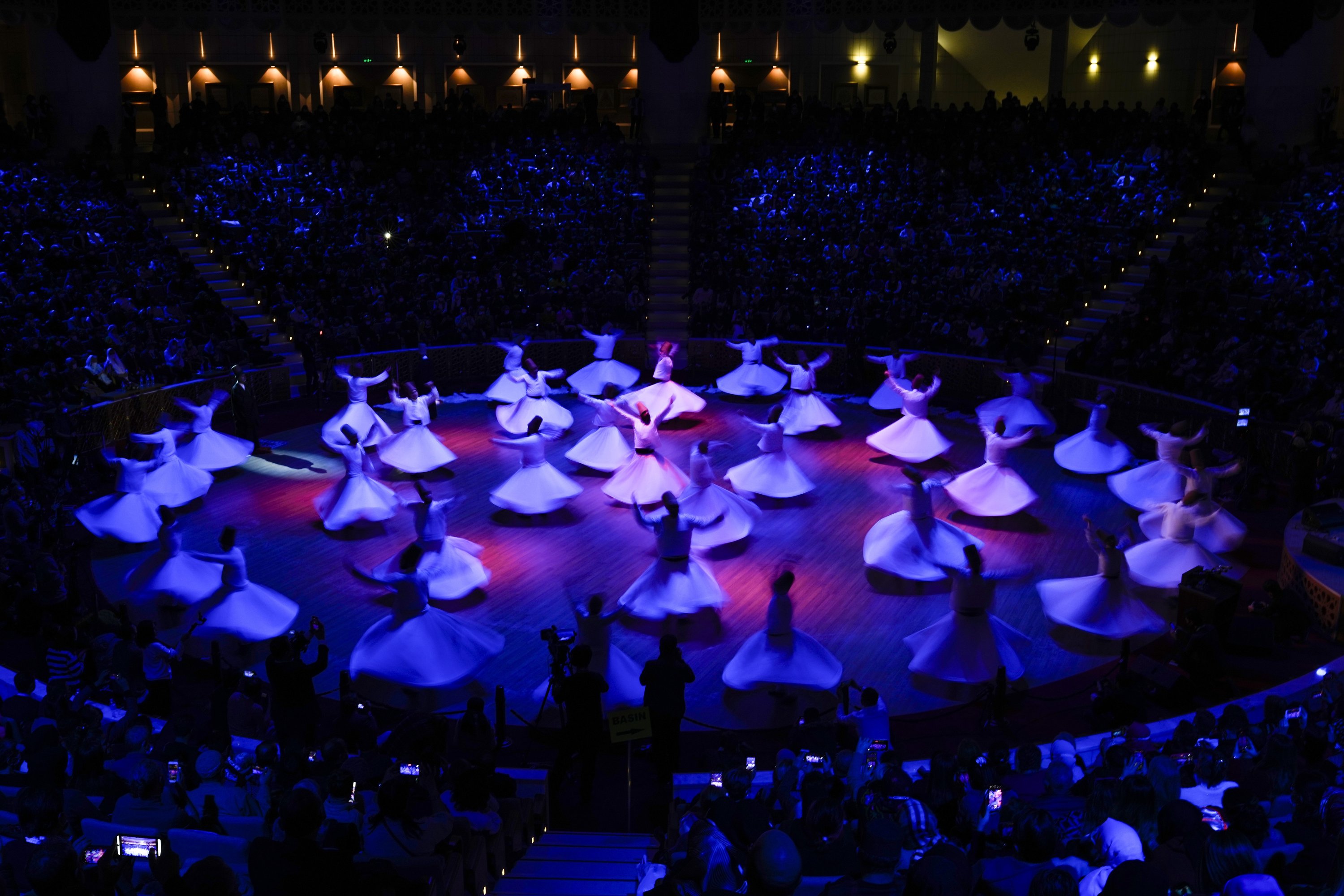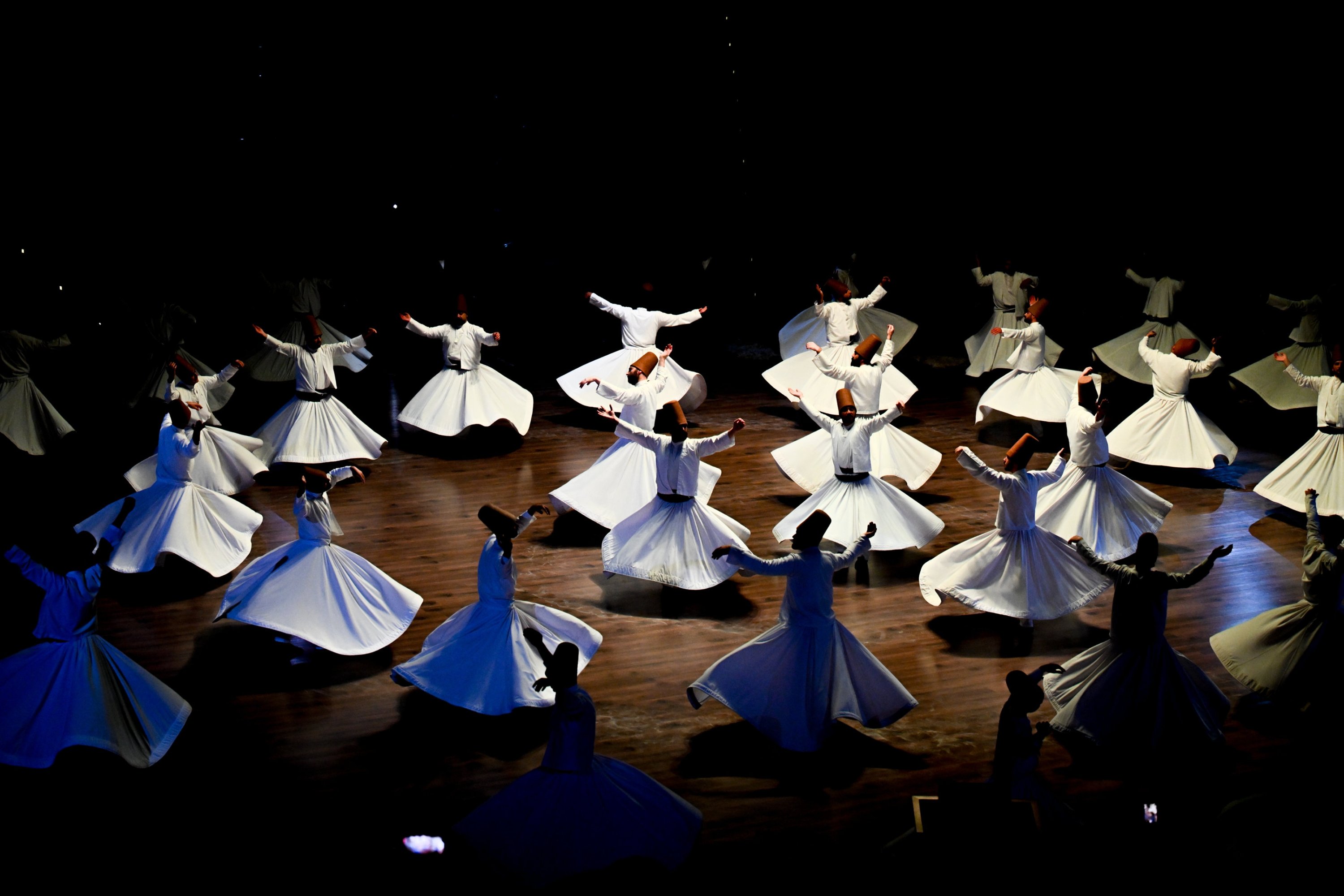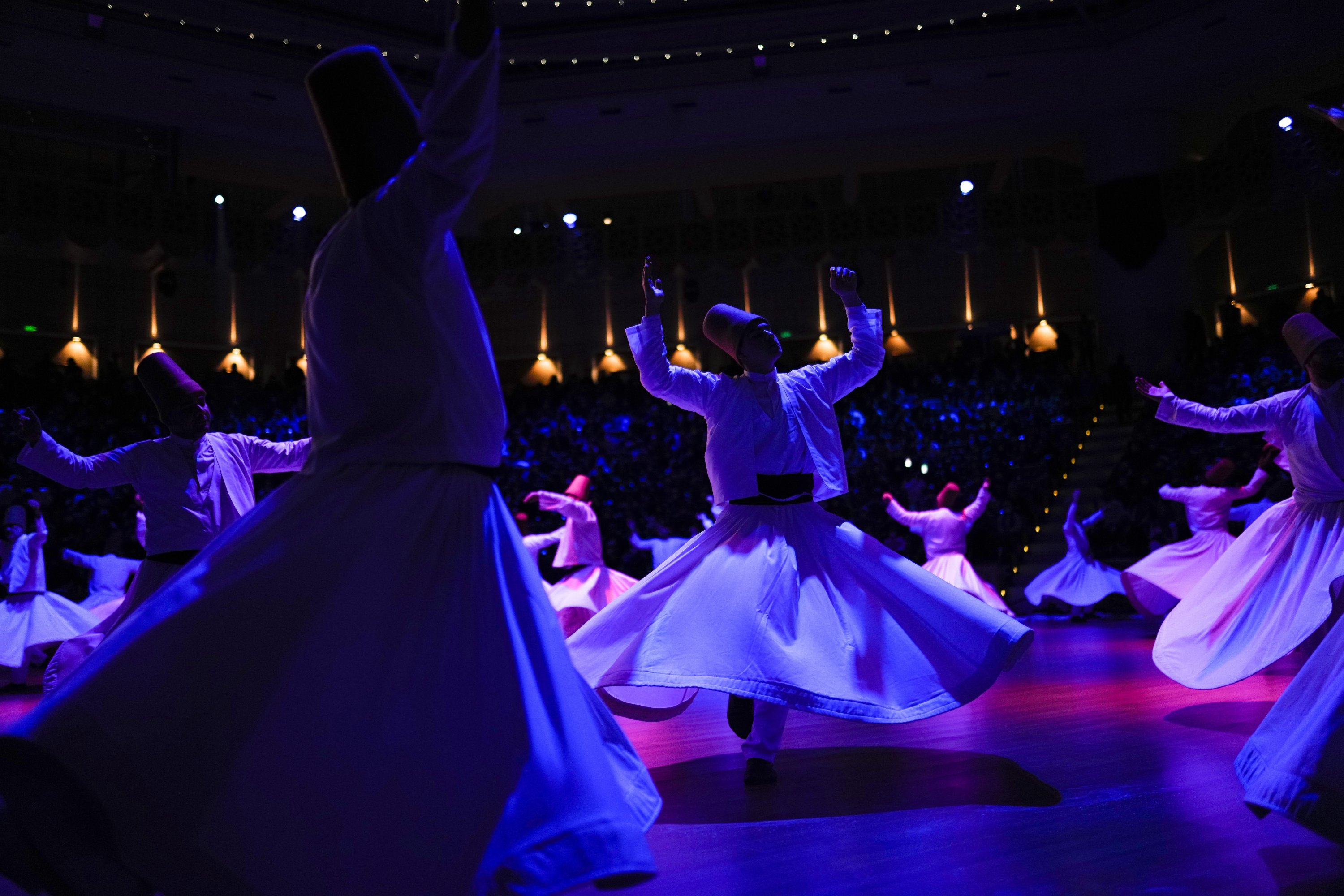Konya Turkey: Whirling Dervishes & Rumi's Mystical Legacy
If you want a unique and authentic travel experience, consider visiting Konya, Turkey. This city is full of rich cultural and mystical traditions that enchant you. In this blog, we'll explore some of the highlights of Konya and what makes it such an extraordinary place to visit.
Konya, Turkey
Konya is located in central Turkey and is the seventh-largest city in the country. It's known for its unique blend of ancient and modern culture and is home to many notable landmarks, including the Mevlana Museum, the Karatay Medrese, and the Alaaddin Mosque.
A Mystical and Cultural Hub
Konya is often described as a hub of Turkish culture and mysticism. Its rich history dates back to ancient times, with monuments and artefacts serving as a testament to the city's deep and varied past. Whether you're interested in architecture, art, or literature, Konya has something to offer. Additionally, the city hosts various cultural events throughout the year, including music festivals, art exhibitions, and traditional performances.
Rumi and the Whirling Dervishes
One of the most famous figures associated with Konya is the poet Rumi. His mausoleum is located in the city and is a popular destination for visitors worldwide. Additionally, Konya is home to the Mevlevi Order, also known as the "Whirling Dervishes," who are famous for their unique spiritual practices. Attending one of their performances can be a truly unforgettable experience.
Konya is a city that should be on every traveller's bucket list. Its unique blend of history, culture, and mysticism makes it one of Turkey's most fascinating and enchanting destinations. So why not plan a trip to Konya today and experience it yourself?

History of Konya
Are you interested in exploring Konya, Turkey's history and cultural significance? Then you've come to the right place. Let's dive into the rich history of this mystical city.
The Seljuk Empire and Konya
Konya rose to prominence during the Seljuk Empire in the 12th century, serving as its capital. The Seljuk Turks brought a rich culture and architectural style that can still be seen in many of the city's landmarks today. One of the most notable examples is the Alaaddin Mosque, which dates back to the 13th century and is still used today.
The significance of Konya in Turkey's history
Konya has played a significant role in Turkish history since ancient times. It was an important centre of commerce and trade, connecting the Mediterranean to the Black Sea. Additionally, it served as a hub of scholarship and learning, with many notable figures of Turkish literature and philosophy hailing from the city. Perhaps most importantly, Konya has been a centre of spirituality and mysticism for centuries, with the teachings of Rumi and the Mevlevi Order leaving an indelible mark on the city's cultural identity.
The history of Konya is long and varied, with influences from the Seljuk Empire and countless other cultures shaping the city's identity. Whether you're interested in architecture, literature, or spirituality, Konya has something to offer you.

The Shrine of Rumi
If you're visiting Konya, you must not miss a visit to the Shrine of Rumi, one of the most important landmarks in the city. This mausoleum is dedicated to the memory of Jalal ad-Din Muhammad Rumi, a 13th-century Persian poet, scholar, and Sufi mystic who founded the Mevlevi Order.
The life of Rumi
Rumi was an exceptional scholar and teacher from a family of learned Islamic scholars. His spiritual journey began after encountering the wandering mystic Shams ad-Din. Through this mystical encounter, Rumi underwent a tremendous spiritual transformation and began composing poetry that reflected the transcendent states he experienced.
The Mevlevi Order
Rumi's teachings form a crucial part of the Mevlevi Order, also known as the Whirling Dervishes. This Sufi sect is famous for the ecstatic dance performances known as the Sema ceremony, which is at the core of their teaching. The whirling movement of the dancers symbolizes the soul's journey towards spiritual enlightenment.
The Whirling Dervishes
The Mevlevi Order is most famous for the Whirling Dervishes, their signature dance. Dressed in long flowing robes with a tall hat, the Dervishes whirl counterclockwise on the right foot, with one hand raised towards heaven and the other pointing to the earth. This dance performance is not only mesmerizing to watch, but it also has symbolic importance.
The significance of the Sema ceremony
The Sema ceremony is an essential element of the Mevlevi Order's teaching, where music and dance are combined to facilitate spiritual enlightenment. The ceremony represents the human beings' journey towards union with the divine. The participants move in a circular motion that signifies the continuous flow of life, and the performance is believed to lead the audience to a trance-like state, experiencing the oneness of God.
With its rich spiritual significance and unique historical background, the Shrine of Rumi remains a must-visit destination in Konya. If you plan to visit the site, take the time to learn more about Rumi's life, his teachings, and the significance of the Mevlevi Order in Islamic history.

Attending a Sema Ceremony
If you're visiting Konya, the Shrine of Rumi is a must-visit destination, but your experience won't be complete without attending a Sema ceremony. Here's what you need to know.
What to expect during a Sema ceremony
The Sema ceremony is a mesmerizing dance performance that symbolizes the soul's journey towards spiritual enlightenment. You'll witness the Whirling Dervishes dressed in long robes, whirling counterclockwise on their right foot with one hand raised towards heaven and one pointing to the earth. The music, dance, and poetry create a spiritual atmosphere that leads the audience to a trance-like state.
Tips for attending a Sema ceremony
- Book your tickets in advance to avoid any inconvenience.
- Respect the religious traditions and dress modestly. Avoid wearing shorts, sleeveless shirts, and revealing clothing.
- Arrive early to find a good viewing spot and avoid any last-minute rush.
- Turn off your phone and keep quiet throughout the performance.
- Don't take photos or videos during the ceremony.
The Sema ceremony is a unique spiritual experience that you won't find anywhere else in the world. By attending it, you'll gain a deeper understanding of Rumi's teachings and the significance of the Mevlevi Order in Islamic history.

Other Must-Visit Places in Konya
The Alaaddin Hill and Palace
The Alaaddin Hill is a historical hill encompassing the Alaaddin Mosque and the Seljuk Palace ruins. It offers a breathtaking city view and is a perfect spot for taking stunning photos. The Seljuk Palace ruins hold many interesting tales from the Seljuk dynasty, and it's great to see them when visiting the palace site.
Ince Minare Museum
Ince Minare Museum has been an elegant medrese, a theological school, built during the reign of the Seljuks. It has now been converted into a museum showcasing the beauty of Seljuk architecture, pottery, and calligraphy, as well as Ottoman rugs, embroidery, and tile work. You can indulge in culture and history when visiting this museum.

Konya Cuisine
If you visit Konya, exploring the city's cuisine is a must. Konya is known for its rich and traditional flavours, heavily influenced by the city's Islamic heritage and rural traditions. Here's what you need to know about Konya's cuisine and the dishes you can't miss.
The local cuisine of Konya
Konya's local cuisine is a blend of Central Anatolian and Ottoman flavours. Konya is a city with a long history, and it has managed to preserve its traditional cuisine with pride. Some ingredients frequently used in Konya's cuisine are lamb, chicken, wheat, bulgur, and dried eggplants. The use of spices is minimal, but the dishes are packed with flavours that are unique to this region.
Must-try dishes
When in Konya, there are a few dishes you can't miss. Mantı is a popular dish that consists of small dumplings filled with beef or lamb and topped with yoghurt and garlic. Etli ekmek is another famous dish, and it's a thin bread topped with minced meat, tomatoes, and peppers.
If you want something sweeter, try Güllaç, a traditional Ramadan dessert made with thin layers of starch, milk, and rose water. Another popular sweet dish is pişmaniye, a candy made of sugar and flour, similar to cotton candy but denser.
Don't forget to try traditional drinks, like the renowned Konya ayran, a refreshing drink made of yoghurt and water, and şalgam suyu, a fermented beetroot juice.
Exploring Konya's cuisine is an adventure that will give you a unique insight into the city's history and traditions. So, make sure to taste everything and enjoy the culinary journey.

Where to Stay in Konya
When visiting Konya, choosing the right accommodation can enhance your experience. From traditional Ottoman-style houses to modern hotels, Konya has various options catering to every budget and preference. Here's what you need to know about where to stay in Konya.
Accommodation options in Konya
Konya offers a range of accommodation options, including hotels, hostels, guesthouses, and even Ottoman-style houses that have been converted into boutique hotels. While most of the hotels are located in the city centre, options are also available in the surrounding areas for those who prefer a quieter stay.
For budget-conscious travellers, there are several hostels and guesthouses available that offer basic amenities at affordable prices. For those looking for a more luxurious stay, Konya has several 5-star hotels offering top-notch facilities and services.
Recommended hotels
If you're looking for a comfortable and convenient stay, there are a few hotels in Konya that come highly recommended. The Rumi Hotel is located in the heart of the city and offers spacious rooms with beautiful views of the Mevlana Museum. The hotel also has an on-site restaurant that serves traditional Turkish cuisine.
The Hilton Garden Inn Konya is another great option for a modern and comfortable stay. The hotel is close to many of Konya's main attractions, including the Alaaddin Mosque and the Mevlana Museum. The rooms are spacious and well-equipped, and the hotel has a fitness centre and an indoor pool.
For a unique and authentic experience, consider staying at one of the traditional Ottoman-style houses converted into boutique hotels. The Mevlana Boutique Hotel is one such option in a restored 19th-century building in the historic Karatay district. The hotel is decorated with traditional Turkish furnishings and offers a peaceful and serene atmosphere.
Choosing the right accommodation can make a big difference in your overall experience in Konya. Take some time to research your options and find the one that best suits your needs and preferences.

Tips for travelling to Konya
- The best time to visit Konya is between March and May when the weather is pleasant and there are fewer crowds.
- If you're travelling during the Islamic holiday of Ramadan, be mindful of limited food options during daytime hours.
- Dress modestly when visiting mosques and other religious sites.
- Carry cash, as some small businesses may not accept credit cards.
- Learn a few Turkish words and phrases to make your stay enjoyable and hassle-free.
Choosing the right accommodation in Konya is crucial for an unforgettable experience. By exploring your choices, you'll find a place that suits your taste, budget, and preferences. Enjoy your trip to Konya!
